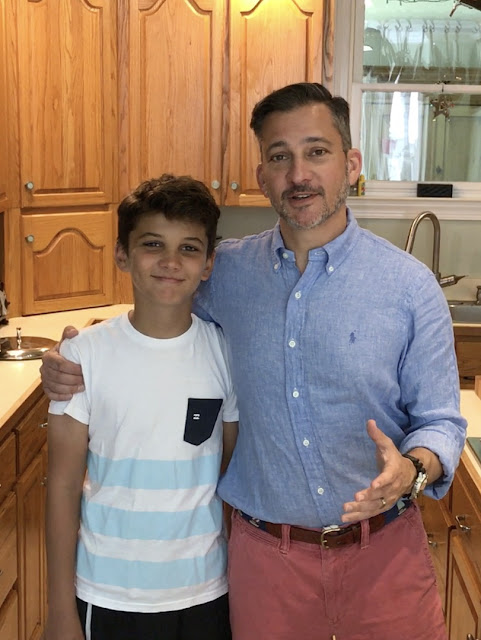One of the
experiences I anticipated most as a new parent was watching my kids learn to
love some of my favorite things. After all, they were mine to mold, so how
could they not come to embrace my enthusiasm for Santana, Star Trek and
snorkeling? Right. If you’re a parent, you already know how that turned out.
More like Harry Styles, Better Call Saul and Super Mario Brothers. But take
heart, new parents, there’s still hope. For me perhaps the best example is
seafood.
I’ve always
loved fish, even when I was growing up in the 1970’s in landlocked Memphis,
Tennessee. There, “seafood” mostly meant crispy fried catfish and the go-to
sandwich of my youth: tuna salad made with albacore, yellow mustard, mayonnaise
and pickle relish. On Friday nights, one grandmother treated me to shrimp
cocktails and fried bay scallops, then it was off to the other grandmother’s
house Saturdays for a dinner of stream-caught trout, followed by a breakfast of
pickled herring or smoked salmon. I was hooked long before my young adult years,
when I’d make the pilgrimage up the Gulf of Mexico from Houston to New Orleans
to meet my parents and gorge on fresh red snapper, soft shelled crab and
crawfish tails.
I moved to
coastal Wilmington, North Carolina, in part because I imagined our family
dinner table groaning under the weight of fresh locally-caught seafood, eager
children seated quietly with their napkins in their laps making polite
conversation before being allowed to dig in and then thanking me afterwards for
treating them to such a priceless experience. It didn’t go down quite that way.
As a
pediatrician, of course I needed no convincing about the importance of seafood
in a healthy diet for my kids. Seafood provides the only naturally occurring
source of dietary vitamin D (dairy products are fortified with it), and their
high contents of omega-3 fatty acids give seafood a crucial role in promoting
eye and brain development. Considering that seafood is also a vital source of
healthy proteins, it’s no wonder that the 2015-2020 Dietary Guidelines
encourage all Americans to eat at least 2 servings (8 ounces) of seafood a week
and advise pregnant and breastfeeding women to quadruple their current seafood
intake.
So what
happened at my dinner table? Any parent (or pediatrician) will tell you two
truths. First, each child is different. Second, it takes time. Was there a
point at which we told my youngest that battered flounder was fried chicken so
he’d try it? Maybe. Was I secretly thrilled when my pickiest eater stole all
his sister’s shrimp off her plate at a restaurant while she was away at the
bathroom? I’m not saying, but we did order more shrimp. Can a camping trip turn
a young teen who never eats fish into one who won’t stop talking about cooking
fresh bass over a wood fire? It would appear so.
Thankfully,
modern shipping and packaging technology has brought the bounty that we enjoy
here on the coast to my hometown of Memphis and beyond. Whether it’s canned or
pouched tuna on the shelf or delicate calamari on ice at your favorite grocery
store, cowboys in Oklahoma can enjoy the same oceanic flavors as foodies from
Miami to Maui.
So what about
that son who carefully studied his “chicken,” before gingerly putting a bite in
his mouth? Check out this video to see what happened and to pick up
a few of my favorite recipes. You can listen to Santana while you make them,
but that Harry Stiles kid isn’t half bad.
Dr. Hill has been engaged by the National Fisheries Institute
to provide his honest professional perspective on the health benefits of eating
seafood.





